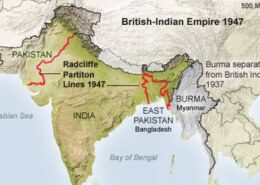Roadmap for Answer Writing 1. Introduction Context: Briefly introduce the significance of the 1940s in the Indian nationalist movement and the demand for independence from British rule. Thesis Statement: Outline how British imperial power complicated the transfer of power, leading to a tumultuous ...
Subhash Chandra Bose has been one of the most noted freedom fighters associated with India. He was so extreme in approach and believed firmly in armed struggle against British dominance. Some important contributions of the man are highlighted below: His biggest contribution was forming the Indian NaRead more
Subhash Chandra Bose has been one of the most noted freedom fighters associated with India. He was so extreme in approach and believed firmly in armed struggle against British dominance. Some important contributions of the man are highlighted below:
His biggest contribution was forming the Indian National Army (INA), which he formed along with the help of the Japanese and other Axis powers. Although the military campaigns in INA were not fruitful, the decisive formation and Bose’s leadership have inspired a large number of Indians against the British Raj system.
He believed in a more militant approach to the freedom struggle which rejected Gandhiji’s policy of no-violence, believing armed resistance was needed to free India from British rule.
Mobilize public support: Such an influential speaker as Bose aroused masses to throw massive support on freedom struggle.
Inspire the Youths : Through leadership, such a confident individual as Bose challenged young India into joining its country’s quest to be liberated by British oppression.
Key Points About Subhash Chandra Bose
Escaped India: He is said to have escaped from house arrest in India and sought help from Axis powers, such as Germany and Japan.
“Give Me Blood and I Will Give You Freedom!”: This very famous slogan of Bose became the rallying cry of the Indian National Army and inspired many Indians in the freedom struggle.
-Azad Hind Government: He established the Provisional Government of Free India, commonly known as the Azad Hind Government, while in exile.
Legacy: Although the INA failed in its military operations, it left a legacy for the Indian freedom struggle as it challenged the British Raj and inspired generations of freedom fighters.
Subhash Chandra Bose is still an important figure in Indian history, and his contributions to the freedom struggle inspire and motivate people today.
See less


Model Answer Introduction The 1940s were pivotal in the Indian nationalist movement, with the demand for independence from British rule reaching a critical point. However, British imperial power significantly complicated the process of transferring power during this period, resulting in a tumultuousRead more
Model Answer
Introduction
The 1940s were pivotal in the Indian nationalist movement, with the demand for independence from British rule reaching a critical point. However, British imperial power significantly complicated the process of transferring power during this period, resulting in a tumultuous transition to independence.
Complications in the Transfer of Power
1. Divide and Rule Policy
The British employed a “divide and rule” strategy that exacerbated communal tensions, particularly between Hindus and Muslims. This policy fostered mistrust and animosity, making it increasingly difficult to negotiate a united and peaceful transfer of power. The communal divide hindered the formation of a cohesive Indian front against colonial rule.
2. Cripps Mission
The Cripps Mission in 1942 aimed to secure Indian support for the British war effort by promising self-governance after the war. However, both the Indian National Congress and the All India Muslim League rejected the proposals, leading to heightened mistrust between British authorities and Indian leaders. This failure deepened the rift and complicated future negotiations.
3. Wavell Plan and Simla Conference
The Wavell Plan proposed in 1945 aimed to establish a new executive council but failed during the Simla Conference due to disagreements over representation and parity between Hindus and Muslims. This deadlock delayed the transfer of power even further, illustrating the complexities of negotiating with deeply divided political factions.
4. Cabinet Mission Plan
The Cabinet Mission of 1946 suggested a federal structure with considerable autonomy for provinces. However, it could not secure consensus among Indian leaders, and disagreements over its implementation led to increased communal violence, complicating the political landscape.
5. Mountbatten Plan and Partition
In 1947, Lord Mountbatten, the last Viceroy of India, proposed a hurried plan for the partition of India into two dominions: India and Pakistan. This poorly executed partition resulted in widespread violence, displacement, and loss of life. The legacy of partition continues to shape the political and social dynamics of the Indian subcontinent.
Conclusion
British imperial power played a critical role in complicating the transfer of power during the 1940s. The divide and rule policy, failed negotiations, and the eventual partition of India not only led to a turbulent transition to independence but also left a lasting impact on the region, shaping the course of history for both India and Pakistan.
See less